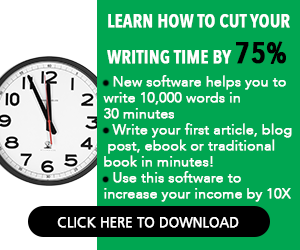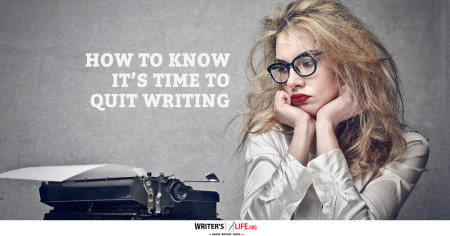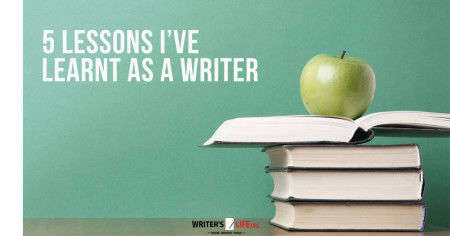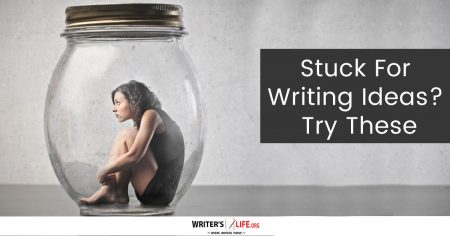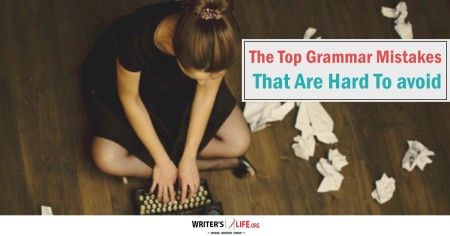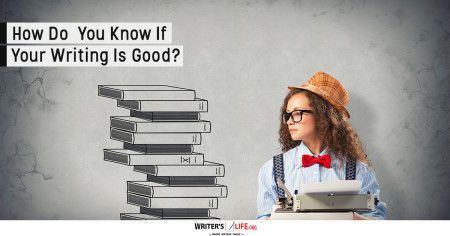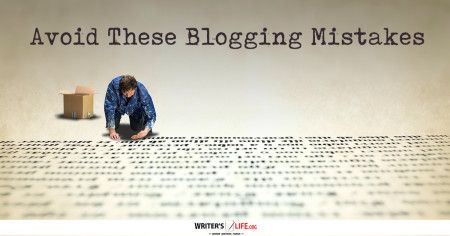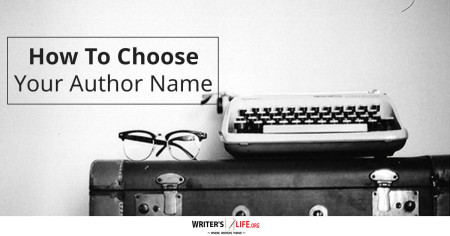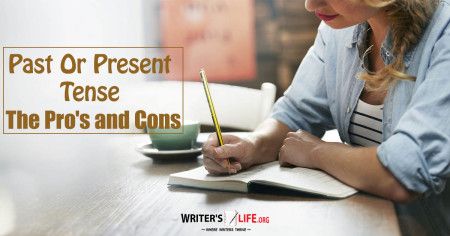- How To Tackle Jealousy In Creative Writing
- Common Submission Mistakes
- How To Stop Your Blog Becoming Boring
- The One Thing Every Successful Writer Has In Common
- How To Make Yourself Aware Of Publishing Scams
- Why Almost ALL Writers Make These Grammar Mistakes At Some Point
- 5 Tips For Authors On How To Deal With Rejection
- Top Mistakes to Avoid When Writing a Novel
- How to Avoid Common New Writer Mistakes
- 10 Mistakes New Fiction Writers Make
Using Nine-Cube Plotting To Organize Your Writing
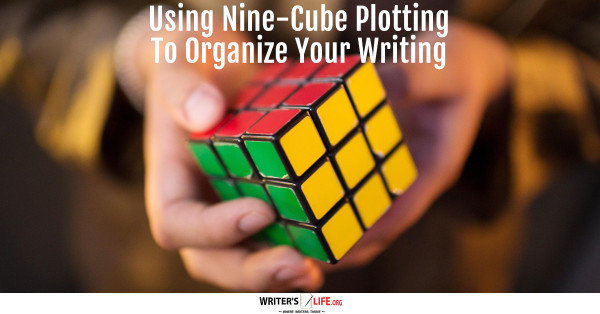
Hello and welcome back to Writer’s Life! Today, we’ll be looking at using nine-cube plotting to organize your writing. Nine-cube plotting—sometimes called Rubik’s cube plotting—is a way to organize the action of your fiction or creative non-fiction work. It’s a way to help structure the ebb and flow of the action to make it easier to write, at least when starting the project. As you revise it you may find it necessary to add or delete elements. If you start with a good structure, however, you can get words on the page in a way that makes sense. You can always edit the story afterward!
To start, draw a box with three rows and three columns. These form the nine spaces within the structure. Number these boxes 1 to 3 across the top, 4 to 6 in the middle, and 7 to 9 along the bottom. All three rows should start with the lower numbers on the same edge (so if you wanted to mix things up and start with 3 in the upper left, 2 in the upper middle, and 1 in the upper right, you need 4 in the middle right, and 7 in the lower right). Box 1 should touch boxes 2 & 4, 2 should touch 1, 6, and 3, and so forth. This will become part of the story as well, as we will see.
The nine spaces, 1-9, represent the major steps in the story’s plot. The story proceeds generally from box 1 to box 9 sequentially.
Space 1 is “Why Are We Here?”, sometimes called the Trigger or the Triggering Event. In this space, write down the #1 thing that happens, THE reason why the story exists. Who is the main character (MC)? Why are they here? In, say, Lord of the Rings: The Fellowship of the Ring, this might include notes about Frodo, the Ring of Power, and sending Frodo off to start the process of deciding what to do with the Ring. This space touches spaces 2 & 4, and will inform the action there as well.
Space 2 is “Expose The Character,” sometimes called the Characterization. In this space, write down some things about how your main character reacts to the Trigger/“Why are we here?” event from space 1. In this space, your reader will gain insight about the main character, by watching how she or he reacts to space 1. This space touches 1, 3, and 5, and will inform the action that occurs in those spaces. In the Lord of the Rings, we might consider the Hobbit’s reaction to the trip to Bree as this characterization. Sam & Frodo talk, run into Merry and Pippin in the farm fields, and so forth.
Space 3 is the “Initial Turn,” sometimes called the First Major Turning Point. The character’s action in 2 will lead toward this turn, and it can be positive or negative. Some things to write down here might be the antagonist’s motives, and the main character’s reaction to them, if they know. This space touches both 2 and 6 and informs the action there. Here, we run across the Nine and discover that evil forces already search for the Ring. Frodo and his friends barely escape to the ferry.
Space 4 is the “Complication,” or the Exposition. Here, write down some revealing background about the MC and consider revealing some of his or her flaws. This space touches 1, 5, and 7. Some of the groundwork for the “Complication,” is in “Why are we here?”, and it leads us to both the action in 5 and the eventual antagonist win in 7. We might consider the reveal of Saruman’s betrayal here, even though he’s not the MC. It is a huge reveal that impacts the action throughout the story.
Space 5 is “The Ah-ha!” or sometimes called the Midpoint, or Connect The Dots. Since space 5 is central in location and touches lots of other spaces, it informs and is informed by them all: 2, 4, 6, and 8 directly, and 1, 3, 7, and 9 tangentially. A false sense of accomplishment, which later sets up the (generally falling) action of 6, might occupy this space. The span of events covered from Strider’s uncovering in Bree up to the council meeting in Imladris might be this moment. It reveals the existence of the 9 ring wraiths—by Frodo’s using of the Ring—and their attempt on Frodo’s life in Bree and the attack at Weathertop. It also exposes the Ring for what it is, as well as the ultimate goal in destroying it.
Space 6 is “Major Falling Action,” the Negative Turning Point. Here, the turning point of space 3 and the “Ah-ha!” of 5 have led to a serious problem for the MC. This space touches 3, 5, and 9, and represents a serious obstacle to the MC and their goals. The Fellowship leaves Rivendell and Saruman forecs them eventually to take the route through the Mines of Moria. There, they discover the downfall of the Dwarven kingdom and barely survive an attack by the mine’s new occupants.
Space 7 is “The Defeat,” also called the Antagonist Wins or Darkest Hour. Here, the MC appears to have been defeated. Overwhelming odds have given the antagonist a clear victory over the MC … or have they? This space touches 4 & 8; the “Complication” tells us about the MC and how they will deal with this. Gandalf’s fall from the Bridge of Khazad-dûm would probably be “The Defeat.” The fellowship then moves on to Lothlorién, where they recover and resume, and meet up with the orcs led by Saruman’s Uruk-hai. Boromir reveals himself to be weaker against the Ring than Frodo, Aragorn, or anyone else so far exposed to it. The fellowship is about to be shattered. All of these might be part of “The Defeat” overall, as well.
Space 8 is “The Tide Turns,” or the Reveal or Revelation. Touching space 5, it pulls together the “Ah-ha!” of the MC as well as the defeat she or he has just suffered, setting the stage for their triumph. Frodo has survived his attack by Boromir and can clearly see his best bet for destroying the Ring is to leave, and go it alone. Through the devastation of Gandalf’s fall and the destruction of the Fellowship, Frodo turns the tide in his favor by setting off solo.
Space 9 is “The Payoff,” also known as Protagonist Wins. Here, the MC overcomes the “Major Falling Action” and “The Defeat” to emerge victorious. Touching spaces 6 and 8, it borrows elements from and reflects things in them. From 6, it resolves the downward turn that happened, by reversing it partially or totally. From 8, it is the final upswing from the MC having turned the tide in his or her favor. Frodo saves Sam from drowning and Sam sticks with Frodo despite Frodo’s desire for Sam to stay. Together, they can set off in secret toward Barad-dûr while Aragorn, Legolas, and Gimli are free to chase after the Uruks holding Merry and Pippin. Although the action, of course, continues in the next book, the Payoff here is that Saruman thinks he’ll be getting the ring delivered by his army, Sauron only knows the ring was used near the Falls of Rauros, and may believe that Saruman is going to retrieve it for him. Virtually everyone’s attention is on the Uruk’s trip back to Orthanc while the Ring is secretly slipping toward Mordor.
One of the key things to remember about any plot structure is that it’s a starting point. If you start out by filling in the various spaces and writing scenes to explain the activity that takes place in each one, you will have a great start on a story. Once you have written it all into your first draft, you may find that items work better in different places, and that’s perfectly fine. It may also help to use a different plotting tool, such as the Hero’s Journey or the LOCK method to re-analyze your story’s first draft.
Another is to remember that certain spaces touch other certain spaces (with space 5, in the center, touching basically all of the others). Where one space touches another, there should be a flow of information from one to the other. The “Why Are We Here?” lends information to the “Complication,” where we learn perhaps some dark secret of the MC that is not evident from the “Why Are We Here?”, adding depth to the character. The reverse is also true; the “Complication” touches “Why Are We Here?” and should refer to and draw out additional information about the MC’s past or plans.
That is the nutshell version of using nine-cube plotting to organize your writing. I hope it has inspired you to read more about plotting in general, and to go write! In my next blog post, I’ll give a similar bird’s eye view of the Hero’s Journey as a plot tool.
Hello and welcome back to Writer’s Life! Today, we’ll be looking at using nine-cube plotting to organize your writing. Nine-cube plotting—sometimes called Rubik’s cube plotting—is a way to organize the action of your fiction or creative non-fiction work. It’s a way to help structure the ebb and flow of the action to make it easier to write, at least when starting the project. As you revise it you may find it necessary to add or delete elements. If you start with a good structure, however, you can get words on the page in a way that makes sense. You can always edit the story afterward!
To start, draw a box with three rows and three columns. These form the nine spaces within the structure. Number these boxes 1 to 3 across the top, 4 to 6 in the middle, and 7 to 9 along the bottom. All three rows should start with the lower numbers on the same edge (so if you wanted to mix things up and start with 3 in the upper left, 2 in the upper middle, and 1 in the upper right, you need 4 in the middle right, and 7 in the lower right). Box 1 should touch boxes 2 & 4, 2 should touch 1, 6, and 3, and so forth. This will become part of the story as well, as we will see.
The nine spaces, 1-9, represent the major steps in the story’s plot. The story proceeds generally from box 1 to box 9 sequentially.
Space 1 is “Why Are We Here?”, sometimes called the Trigger or the Triggering Event. In this space, write down the #1 thing that happens, THE reason why the story exists. Who is the main character (MC)? Why are they here? In, say, Lord of the Rings: The Fellowship of the Ring, this might include notes about Frodo, the Ring of Power, and sending Frodo off to start the process of deciding what to do with the Ring. This space touches spaces 2 & 4, and will inform the action there as well.
Space 2 is “Expose The Character,” sometimes called the Characterization. In this space, write down some things about how your main character reacts to the Trigger/“Why are we here?” event from space 1. In this space, your reader will gain insight about the main character, by watching how she or he reacts to space 1. This space touches 1, 3, and 5, and will inform the action that occurs in those spaces. In the Lord of the Rings, we might consider the Hobbit’s reaction to the trip to Bree as this characterization. Sam & Frodo talk, run into Merry and Pippin in the farm fields, and so forth.
Space 3 is the “Initial Turn,” sometimes called the First Major Turning Point. The character’s action in 2 will lead toward this turn, and it can be positive or negative. Some things to write down here might be the antagonist’s motives, and the main character’s reaction to them, if they know. This space touches both 2 and 6 and informs the action there. Here, we run across the Nine and discover that evil forces already search for the Ring. Frodo and his friends barely escape to the ferry.
Space 4 is the “Complication,” or the Exposition. Here, write down some revealing background about the MC and consider revealing some of his or her flaws. This space touches 1, 5, and 7. Some of the groundwork for the “Complication,” is in “Why are we here?”, and it leads us to both the action in 5 and the eventual antagonist win in 7. We might consider the reveal of Saruman’s betrayal here, even though he’s not the MC. It is a huge reveal that impacts the action throughout the story.
Space 5 is “The Ah-ha!” or sometimes called the Midpoint, or Connect The Dots. Since space 5 is central in location and touches lots of other spaces, it informs and is informed by them all: 2, 4, 6, and 8 directly, and 1, 3, 7, and 9 tangentially. A false sense of accomplishment, which later sets up the (generally falling) action of 6, might occupy this space. The span of events covered from Strider’s uncovering in Bree up to the council meeting in Imladris might be this moment. It reveals the existence of the 9 ring wraiths—by Frodo’s using of the Ring—and their attempt on Frodo’s life in Bree and the attack at Weathertop. It also exposes the Ring for what it is, as well as the ultimate goal in destroying it.
Space 6 is “Major Falling Action,” the Negative Turning Point. Here, the turning point of space 3 and the “Ah-ha!” of 5 have led to a serious problem for the MC. This space touches 3, 5, and 9, and represents a serious obstacle to the MC and their goals. The Fellowship leaves Rivendell and Saruman forecs them eventually to take the route through the Mines of Moria. There, they discover the downfall of the Dwarven kingdom and barely survive an attack by the mine’s new occupants.
Space 7 is “The Defeat,” also called the Antagonist Wins or Darkest Hour. Here, the MC appears to have been defeated. Overwhelming odds have given the antagonist a clear victory over the MC … or have they? This space touches 4 & 8; the “Complication” tells us about the MC and how they will deal with this. Gandalf’s fall from the Bridge of Khazad-dûm would probably be “The Defeat.” The fellowship then moves on to Lothlorién, where they recover and resume, and meet up with the orcs led by Saruman’s Uruk-hai. Boromir reveals himself to be weaker against the Ring than Frodo, Aragorn, or anyone else so far exposed to it. The fellowship is about to be shattered. All of these might be part of “The Defeat” overall, as well.
Space 8 is “The Tide Turns,” or the Reveal or Revelation. Touching space 5, it pulls together the “Ah-ha!” of the MC as well as the defeat she or he has just suffered, setting the stage for their triumph. Frodo has survived his attack by Boromir and can clearly see his best bet for destroying the Ring is to leave, and go it alone. Through the devastation of Gandalf’s fall and the destruction of the Fellowship, Frodo turns the tide in his favor by setting off solo.
Space 9 is “The Payoff,” also known as Protagonist Wins. Here, the MC overcomes the “Major Falling Action” and “The Defeat” to emerge victorious. Touching spaces 6 and 8, it borrows elements from and reflects things in them. From 6, it resolves the downward turn that happened, by reversing it partially or totally. From 8, it is the final upswing from the MC having turned the tide in his or her favor. Frodo saves Sam from drowning and Sam sticks with Frodo despite Frodo’s desire for Sam to stay. Together, they can set off in secret toward Barad-dûr while Aragorn, Legolas, and Gimli are free to chase after the Uruks holding Merry and Pippin. Although the action, of course, continues in the next book, the Payoff here is that Saruman thinks he’ll be getting the ring delivered by his army, Sauron only knows the ring was used near the Falls of Rauros, and may believe that Saruman is going to retrieve it for him. Virtually everyone’s attention is on the Uruk’s trip back to Orthanc while the Ring is secretly slipping toward Mordor.
One of the key things to remember about any plot structure is that it’s a starting point. If you start out by filling in the various spaces and writing scenes to explain the activity that takes place in each one, you will have a great start on a story. Once you have written it all into your first draft, you may find that items work better in different places, and that’s perfectly fine. It may also help to use a different plotting tool, such as the Hero’s Journey or the LOCK method to re-analyze your story’s first draft.
Another is to remember that certain spaces touch other certain spaces (with space 5, in the center, touching basically all of the others). Where one space touches another, there should be a flow of information from one to the other. The “Why Are We Here?” lends information to the “Complication,” where we learn perhaps some dark secret of the MC that is not evident from the “Why Are We Here?”, adding depth to the character. The reverse is also true; the “Complication” touches “Why Are We Here?” and should refer to and draw out additional information about the MC’s past or plans.
That is the nutshell version of using nine-cube plotting to organize your writing. I hope it has inspired you to read more about plotting in general, and to go write! In my next blog post, I’ll give a similar bird’s eye view of the Hero’s Journey as a plot tool.








